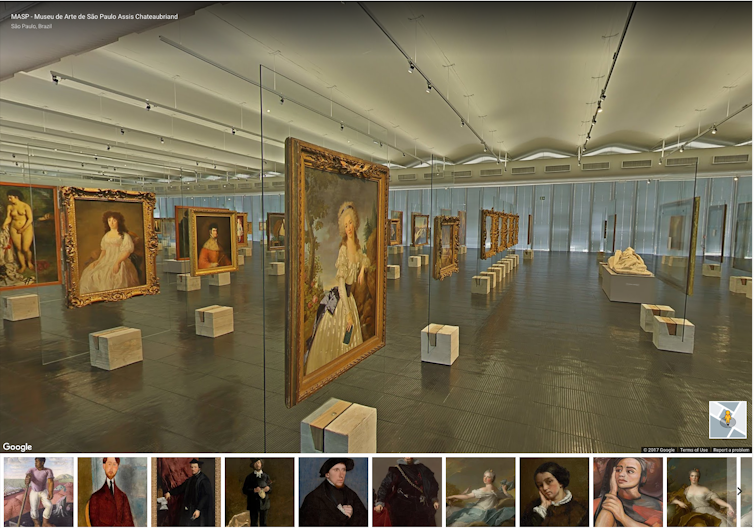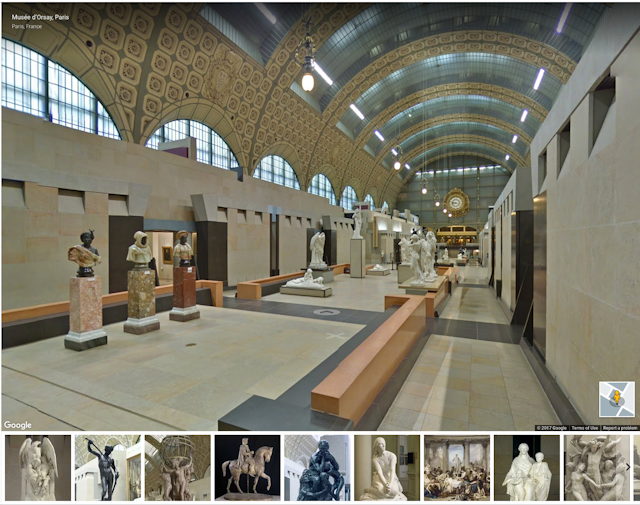People can now access much of Sydney’s Museum of Applied Arts and Sciences’ extensive collection online. High-resolution images of more than 130,000 objects are available for viewing on a new, mobile-friendly collections website.
The Museum, which includes the Powerhouse Museum, is one of a host around the world making their collections and data available for free public use.
My research investigates the different ways – from digital pens to crowd-sourced exhibitions – museums are meeting their audiences’ changing expectations.
Make your own path
Bringing technology into museums allows patrons to move past traditional aids, like maps and audio guides, which dictate how to navigate an exhibition. Visitors are increasingly encouraged to roam, using a variety of sophisticated tools to create their own paths.
Take the Google Cultural Institute, which has an app that lets visitors in participating institutions see comprehensive information about any artwork by just holding up their phone.
Another intriguing example, at Cooper Hewitt Design Museum in New York, is the digital pen. Patrons can earmark their favourite objects, make notes and record impressions by using the pen on electronic tags and touch screens next to the displays. This is compiled into a personalised collection and can be accessed online with a unique code.

Likewise, Tasmania’s Museum of Old and New Art has replaced traditional wall labels with the O, a tablet that tracks the holder’s on-site movement and provides useful information about nearby artefacts.
We’re likely to see the development of more devices – both mobile and wearable – that detect our surroundings and respond with flexible and highly relevant information. Apple is already moving into this space, with its recent patent for a mobile augmented reality system designed for museums.
Print your own masterpieces
A striking new development is the number of organisations embracing the principles of open access: making images of their public domain items available for free.
While theoretically, public domain images (where no copyright exists, generally some time after the death of the creator) are available to all, in practice supplying high quality images of entire collections is costly. Museums have traditionally sold these for a modest profit.
A notable case study is the Rijksmuseum, the Dutch national museum. In 2013 they made around 150,000 images available to the public in a dedicated website, including the masterpieces of van Gogh, Vermeer and Rembrandt. The museum urged people to download free high quality versions as posters, bed covers, or other creative interpretations.

The chair of the Europeana network, an organisation that helps museusms navigate public domain, has argued that the Rijksmuseum has made more money through increased brand value, new partnerships, sponsors and donors, than it did by selling image rights.
It’s hard to tell if any people chose not to physically go to to a museum because they could find pictures online. But the Rijksmuseum bet that increased familiarity would pique people’s interest in seeing the real thing, and it looks like the gamble is paying off.
All this connectivity opens up a new realm: crowd-sourced exhibitions. In 2014 The Smithsonian Asian Pacific American Centre invited the public to participate in a Day in the Life of an Asian Pacific America exhibition. Professional and amateur photographers submitted over 2,000 photos, and curators picked a cross-section to showcase.

Displaying 100 million objects
All of these initiatives are designed to help museums fulfil their basic function: to share their collections with the public. The difficulty of doing this conventionally becomes apparent when we look at the sheer quantity of items museums deal with.
Australia’s museums, galleries, archives and libraries contain a combined 100 million objects, and only 5% of them are on display at any one time. Around 25% of this mass collection has been digitised, although not all of that is publicly available.
But this is changing, as the typical museum-goer’s habits shift and more collections are digitised. A fabulous starting point for audiences is Google Arts & Culture, a digital platform that draws from 500 cultural institutions around the world. Audiences can actually “walk” – in a high-definition version of Street View – through statuary in the Musée d’Orsay or the portrait gallery of the Museu de Arte de São Paulo.

These developments offer exciting new opportunities. But will museums remain places for community, history, art and culture? My prediction is that they will, but they face some hazards.
Facebook, for example, recently banned a 37-year-old Charles Blackman painting that featured a naked woman because it violated its guidelines. In museums’ quest to becoming more sensory and agile, they will need to deal with the competing priorities of the digital companies they collaborate with.
Most museums are essentially non-commercial operations, receiving at least some public funding to fulfil a public mission. In contrast, digital platforms are commercial entities that benefit from publicity and data mining, and have no commitment to artistic freedoms.
Ultimately, the museum of the future will have to balance the tension between using appealing new technology, forging partnerships with tech giants, and their fundamental role of protecting and revealing our culture.

